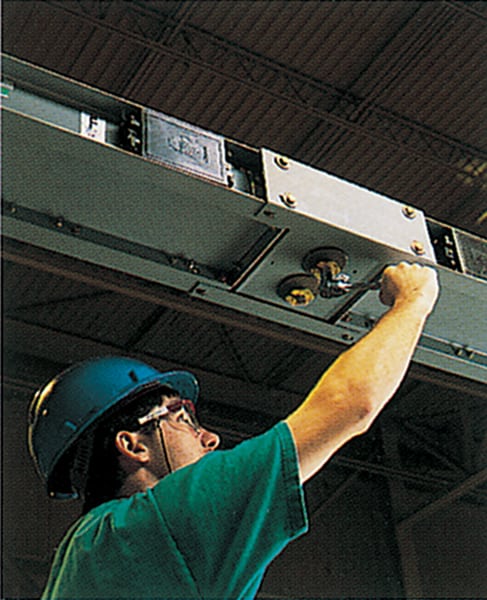 |
|
3. Easy installation. Busway fittings connect quickly and securely using a sandwich design and a torque-indicating bolt. Courtesy: Eaton Corp. |
In all, these benefits can prove highly attractive to facility operators challenged to maximize available facility space while reducing capital expenditures, with a demonstrable benefit that helps improve the company’s bottom line.
Checklist: 10 Key Busway Features
Now that we’ve established some of the advantages of busway technology over cable and conduit, it’s important to understand the features to consider when choosing equipment for your facility. When looking to capitalize on busway’s considerable benefits, make sure to seek out products that feature the following attributes.
Certified Safety.At the bare minimum, any busway product worth using should be certified by Underwriters Laboratories, the Canadian Standards Association, or the International Electrotechnical Commission. Products that don’t meet these standards have not been tested for safe operation and may pose a risk to the facility if utilized.
Indoor and Outdoor Options. Depending on the needs of your facility, you’ll likely want busway to serve your needs both inside and outside the plant buildings. Reputable busway technology manufacturers typically offer options for both types of applications, so make sure to seek out those that do.
Wide Variety of Current Ratings. Varying applications require varying current ratings, which can shift over time as the facility grows and needs for power distribution change. The best busway solutions support any current rating the facility might need, both now and in the future.
High Fault Current Ratings. To protect sensitive electrical equipment, busway must be capable of handling the available fault current rating a given power distribution system is capable of throwing at it.
Broad Range of Plug Options. Look for product families whose bus plugs offer breaker, fusible switch, contactor, and starter options for every requirement, as well as multiple surge protection and metering alternatives.
Flexible Configuration Options.Variety is equally important when it comes to power distribution options, so be sure to choose busway products capable of handling both single-phase and three-phase power, with or without a neutral bar, or even with a 200% neutral option. Selecting products that support integral, internal, and isolated grounding options is also critical.
Ease of Installation.All busway products are easier to install than cable and conduit, but best-in-class offerings further simplify deployment by providing thoughtful extras like alignment pins that prevent operators from installing bus plugs out of rotation, and clearly labeled stickers that illustrate where segments connect.
Alternative Options for Connecting Directly to Other Electrical Equipment.Most busway manufacturers require facilities and contractors to connect other products like group metering and panelboards via cable runs between bus plugs and distribution equipment. The most sophisticated busway solutions, however, save money and floor space while shortening installation times by allowing companies to connect group metering and panelboards directly into a nearby busway segment instead.
ENERGY STAR and LEED Certification. Facilities certified under the Leadership in Energy and Environmental Design (LEED) standard for environmentally sustainable construction are often eligible for tax breaks and other financial incentives, so look for busway products that qualify for LEED credits. And using busway bearing a SMaRT certification can qualify facilities for additional utility rebates, while reducing operating expenses by lowering power bills.
Comprehensive Services and Support.Finally, while busway is an intuitive, largely do-it-yourself technology, users sometimes require planning and implementation assistance. Make sure to buy only from vendors with the experience and resources to offer expert support and services when needed (such as busway measurement services, final field fit services, and commissioning).
Reflect on Options
Though cable and conduit has been the default choice for distributing power to electrical equipment for many years, busway offers an extensive list of practical and financial advantages for power facility operators. Those plants looking to simplify power distribution and increase agility while saving money and conserving space should take a close look at carefully designed and equipped busway solutions with the features, support, and capabilities to meet their unique and evolving needs. ■
—Steve Lovell is a product line manager for busway at Eaton Corp.

